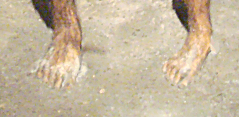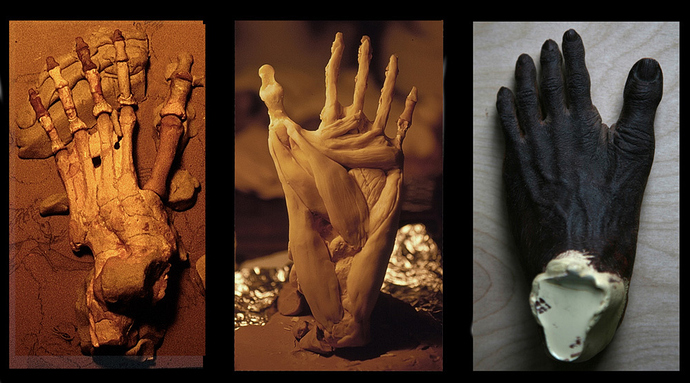What is meant by “ the big toe, while slightly divergent from the other four digits” can seen from the picture in the ref which shows feet not easily distinguished from humans.

This shows that the article and reconstruction are out of date since it is now well accepted that Australopiths had a splayed and short big toe just like modern apes. Which you can see in Little Foot and also in a more recent construction of a Lucy model by paleoartist Johm Gurch.

The ref article talks about the Laetoli Tracks which at the time were speculated to have been made by Australopiths. Since this is ruled out by more accurate Australopith feet shape shown that leaves only one creature that is known to make footprints that match the Laetoli Tracks.
tbc/… (sorry, out of time atm)
